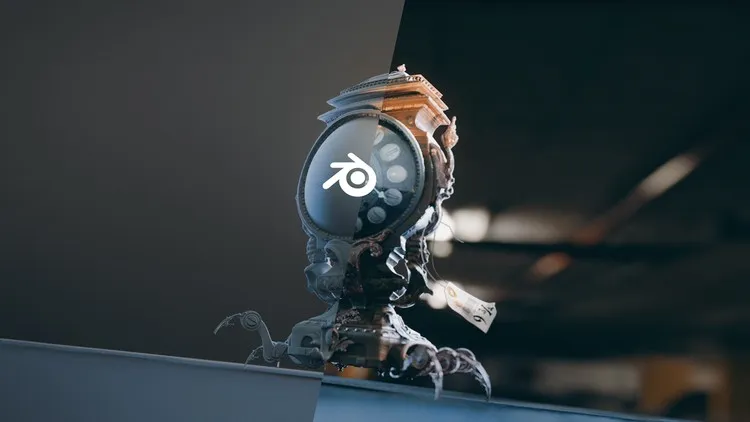
HDR Image-Based Lighting in Blender 
Learn how to create stunning visuals with HDR image-based lighting in Blender. This crash course will guide you through the complete workflow, giving you the skills to create beautiful 3D scenes. ▼
ADVERTISEMENT
Course Feature
![]() Cost:
Cost:
Free
![]() Provider:
Provider:
Udemy
![]() Certificate:
Certificate:
No Information
![]() Language:
Language:
English
![]() Start Date:
Start Date:
Self Paced
Course Overview
❗The content presented here is sourced directly from Udemy platform. For comprehensive course details, including enrollment information, simply click on the 'Go to class' link on our website.
Updated in [April 29th, 2023]
HDR Image-Based Lighting in Blender is a course designed to help learners understand the qualities of light and how to analyse them in order to create eye-popping 3D art. Learners will learn how to crush the image-based lighting workflow and the true advantages of illuminating their 3D sceneries with High Dynamic Range photos. They will also learn how to record a full 360° high dynamic range panorama inside Blender. This course will provide learners with the knowledge and skills to create stunning 3D art with HDR lighting.
[Applications]
After completing this course, students can apply their knowledge of HDR image-based lighting in Blender to create stunning 3D art. They can use the techniques learned to record a full 360° high dynamic range panorama and use it to illuminate their 3D sceneries. Students can also use the knowledge gained to analyse the qualities of light and apply them to their 3D art.
[Career Paths]
1. 3D Artist: 3D artists use computer software to create 3D models, animations, and visual effects for films, television, video games, and other media. They use Blender to create realistic lighting effects and to create realistic environments. With the HDR image-based lighting in Blender, 3D artists can create more realistic lighting effects and environments.
2. Lighting Technician: Lighting technicians use lighting equipment to create the desired lighting effects for films, television, video games, and other media. With the HDR image-based lighting in Blender, lighting technicians can create more realistic lighting effects and environments.
3. Visual Effects Artist: Visual effects artists use computer software to create special effects for films, television, video games, and other media. With the HDR image-based lighting in Blender, visual effects artists can create more realistic lighting effects and environments.
4. Game Developer: Game developers use computer software to create video games. With the HDR image-based lighting in Blender, game developers can create more realistic lighting effects and environments for their games. This will help to create a more immersive gaming experience for players.
[Education Paths]
1. Bachelor of Science in Computer Science: This degree path focuses on the fundamentals of computer science, including programming, software engineering, and computer architecture. It also covers topics such as artificial intelligence, machine learning, and data science. With the increasing demand for computer science professionals, this degree path is becoming increasingly popular and is expected to continue to grow in the future.
2. Bachelor of Science in Digital Media: This degree path focuses on the use of digital media in the creation of art, animation, and video games. It covers topics such as 3D modeling, animation, game design, and digital media production. With the increasing demand for digital media professionals, this degree path is becoming increasingly popular and is expected to continue to grow in the future.
3. Bachelor of Science in Game Design: This degree path focuses on the design and development of video games. It covers topics such as game mechanics, game design, game programming, and game production. With the increasing demand for game designers, this degree path is becoming increasingly popular and is expected to continue to grow in the future.
4. Bachelor of Science in Visual Effects: This degree path focuses on the use of visual effects in the creation of movies, television shows, and video games. It covers topics such as 3D modeling, animation, compositing, and visual effects production. With the increasing demand for visual effects professionals, this degree path is becoming increasingly popular and is expected to continue to grow in the future.
Pros & Cons

1. Well-explained concepts with helpful tips for Blender users.

2. Provides practical knowledge for creating professional-looking 3D work.

3. Covers both HDRI lighting and general lighting basics.

4. Teaches how to use HDRIs for lighting and setting moods.

5. Offers insights applicable to lighting in general.

6. Free, short, and concise course with valuable content.

1. Focused on Blender users who are already comfortable with the software.

2. Lack of installation instructions or basic Blender tutorials.

3. Course may not be up-to-date with the latest Blender version.

4. Accent of the instructor may be challenging for some learners.

5. Rendering speed may vary depending on computer specifications.

6. Limited practical application beyond HDRI-based lighting in Blender.
Course Provider

Provider Udemy's Stats at AZClass
Discussion and Reviews
0.0 (Based on 0 reviews)
Explore Similar Online Courses

Fundamentals of Containers Kubernetes and Red Hat OpenShift

Digital Media Analytics: Using Data from Owned Media

Python for Informatics: Exploring Information

Social Network Analysis

Introduction to Systematic Review and Meta-Analysis

The Analytics Edge

DCO042 - Python For Informatics

Causal Diagrams: Draw Your Assumptions Before Your Conclusions

Whole genome sequencing of bacterial genomes - tools and applications

The BEST Way To Learn Blender in 2023!!

Blender 3D: Create Animate and Sell Game objects

Learn Blender for Beginners for free part 2
 Related Categories
Related Categories
 Popular Providers
Popular Providers
Quiz
 Submitted Sucessfully
Submitted Sucessfully
1. What is HDR Image-Based Lighting in Blender?
2. What is the goal of HDR Image-Based Lighting in Blender?
3. What is the first step of HDR Image-Based Lighting in Blender?


Start your review of HDR Image-Based Lighting in Blender